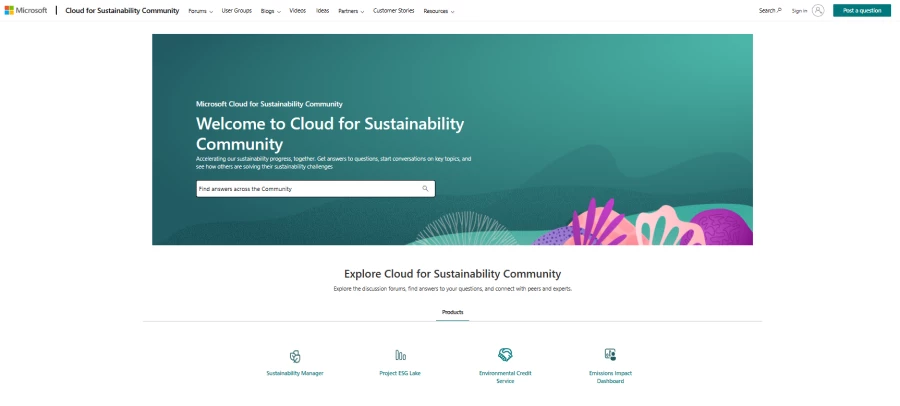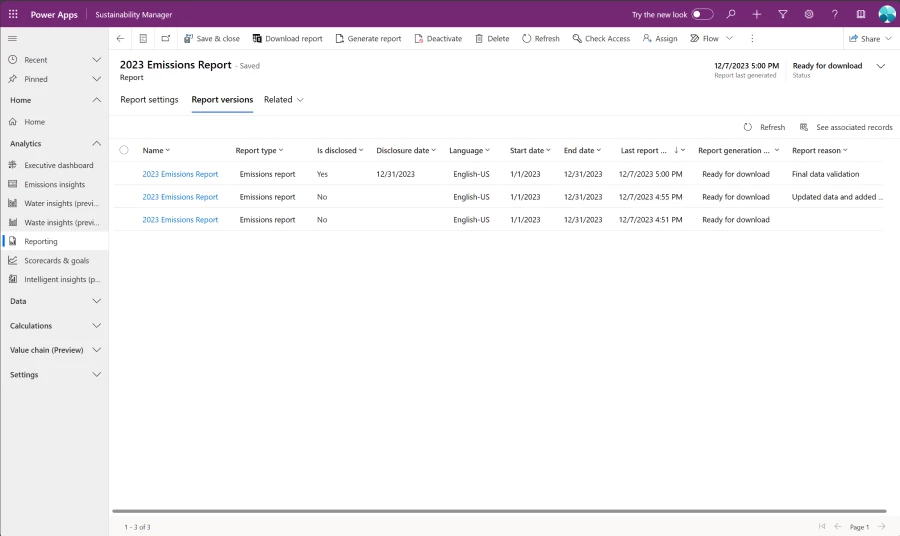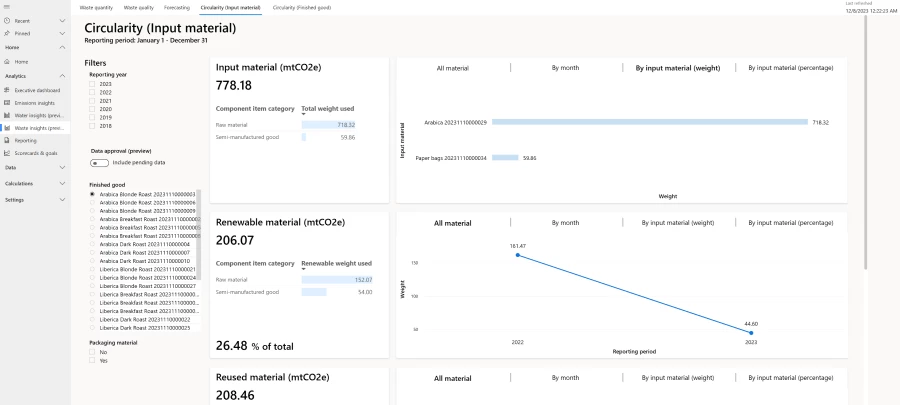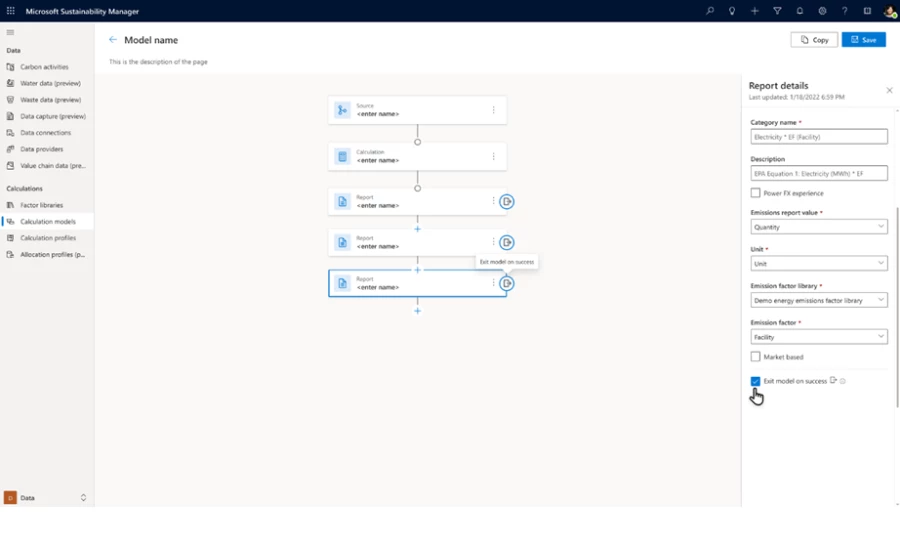Notizie per Categorie
Articoli Recenti
- [Launched] Generally Available: New Microsoft Dev Box Regional Availability 1 Aprile 2025
- [In preview] Public Preview: CNI Overlay for Application Gateway for Containers and AGIC 1 Aprile 2025
- Transforming public sector security operations in the AI era 1 Aprile 2025
- [In preview] Public Preview: Azure Front Door Custom Cipher Suite 1 Aprile 2025
- [Launched] Public Preview: Azure Monitor Application Insights Auto-Instrumentation for Java and Node Microservices on AKS 1 Aprile 2025
- Retirement: Log Analytics Beta API to Be Retired on March 31, 2026 1 Aprile 2025
- Retirement: Log Analytics Batch API to Be Retired on March 31, 2028 1 Aprile 2025
- [In preview] Public Preview: ExpressRoute Resiliency Enhancements 1 Aprile 2025
- Retirement: Azure Machine Learning SDK v1 Will Be Retired on March 31, 2025 – Transition to Machine Learning SDK v2 31 Marzo 2025
- Retirement: Cloud Services (Extended Support) to Be Retired on March 31, 2027 31 Marzo 2025
Introducing Microsoft Cloud for Sustainability Community portal and new Sustainability Manager features
As organizations dive deeper into their sustainability data journey, they need ever-sharper tools and resources to address complexity. We’re excited to share that we’ve launched the Microsoft Cloud for Sustainability Community portal, a place to connect and lean on each other’s experience. Use the portal to share and find answers to questions, discover valuable resources, and submit product feedback. Keep reading to learn more about the new portal as well as the latest new features in Microsoft Sustainability Manager to help you accelerate progress.
Microsoft Sustainability Manager
Record, report, and reduce your environmental sustainability impact

Empower your organization and others to do more through the sustainability community
We invite all organizations to help make the Microsoft Cloud for Sustainability Community portal a vibrant hub for learning, connecting, and contributing to collective progress. Check out community features like:
- Forums for Sustainability Manager, Emissions Impact Dashboard, Environmental Credit Service, and Project ESG Lake.
- User Groups to connect with peers and experts online and in person.
- Ideas for improving Microsoft Cloud for Sustainability. Share your feedback, including feature requests, and vote for others’.
- Customer success stories showcasing how our customers are delivering impact with Microsoft sustainability solutions.
- Partner access across our growing global sustainability partner ecosystem.
- Resources to help you get started, learn, and request support, including quick access to blogs and Tech Talks. Stay informed about the latest innovations and customer and partner successes and speed up your time to value with expert-led demos and discussions.

Generate and store restatement reports for increased auditability of disclosures
Organizations are often faced with having to redisclose their environmental data due to errors, omissions, methodological changes, or changes in the scope of what was previously reported. Through restatement, when a material change has been identified, they can issue redisclosure or restatement of pre-disclosed data. This new capability in Sustainability Manager provides a version control system that can help increase the auditability of disclosures, enabling your organization to maintain a detailed audit trail for report changes.
When generating new reports, you don’t want to lose track of previous versions. Your organization will need to store those copies and capture the reasons why restatement was required. With support for version history, you can access previously generated reports and tag those reports as being disclosed.
Each time a new report is generated, Sustainability Manager will capture the reason provided, which is important for the record. Newly generated reports are stored automatically, and report versions can be tagged with a disclosure date. If there’s a need to regenerate the report for evaluation or disclosure purposes, you can now provide a supporting narrative including the expected impact.

Reduce waste and resource consumption with circularity data ingestion
Circularity is an important means of reducing waste and resource consumption by keeping materials, products, and services in use for as long as possible. To help organizations measure and report their circularity performance, Sustainability Manager now enables the ingestion of data into circularity entities as well as circularity metrics reporting and visualization.
Circularity data ingestion (preview) is the starting point for circularity tracking. This includes all the existing data ingestion methods, such as form-based ingestion, Microsoft Power Query, and Microsoft Excel templates. Use this feature to record:
- The use of renewable, recycled, or reused raw materials for manufacturing finished products.
- The degree of circularity in the finished products.
Report circularity metrics to meet sustainability disclosures standards (preview). Existing reporting capabilities in Sustainability Manager have been enhanced to enable organizations to meet their circularity sustainability regulatory disclosure requirements, including those coming from Corporate Sustainability Reporting Directive (CSRD). You can now generate at intervals that you set (monthly, quarterly, annually, or custom) and download custom reports to disclose your organization’s circularity metrics. These reports can be shared with stakeholders so they can track your organization’s progress toward sustainability goals.
The circularity metrics provided in Sustainability Manager are aligned to standards such as GRI-301 and CSRD. These include:
- Total weight and percentage of renewable, non-renewable, recycled, and reused raw materials in the manufacture of each finished good.
- Degree of circularity in the finished goods.
Visualize circularity data with the Insights dashboard. Now in preview in Sustainability Manager, new dashboards enable organizations to visualize their current and historical circularity data to drive insights and reporting. You can use the Circularity (input material) dashboard to track the weight and percentage of raw materials consumed to manufacture a finished good and the Circularity (finished good) dashboard to track the weight and percentage of total finished goods that follow circularity design principles. Roll up and drill down into the circularity data based on the selected reporting period, and filter by finished good or packaging material.
Generate single emissions reports that prioritize specific data—Carbon Emissions Contingency Factor
When calculating carbon emissions, an organization might need to use a priority order with factor mappings, choosing a best match but finding an appropriate default when that’s not available. This enables the generation of a single emissions record in a calculation instead of a record per node, based on the calculation model requirements.

Carbon Emissions Contingency Factor is a feature within calculation models and factor mappings that includes:
- Hierarchy of factors. Set up a hierarchy of factors for emission calculations that begins with the most specific factors (such as factors unique to suppliers) and gradually moves toward more general factors. For example, arrange emission factors from exact suppliers or facilities to broader industry averages.
- Prioritizing specific data. Highlight the most specific emission factor available in your calculations. This system aims to improve accuracy in carbon footprint calculation by prioritizing detailed information—favoring precise data over general estimates.
- Shift from node-based reporting. As an alternative to generating an emissions record for each report node, use this new methodology to generate reports on the most detailed factor found in the hierarchy.
To streamline the process and avoid generating multiple emission records for various report nodes, the exit on success checkbox enables much more flexibility and maturity in factor mapping use, toward further scaling calculations.

Microsoft Cloud for Sustainability deployment expanded to India
We’re excited to announce the deployment of Microsoft Cloud for Sustainability to the India datacenter region. This will enable our India customers to keep important business data within the country. Learn more about Microsoft Cloud for Sustainability international availability.
Next steps
Want to learn more about Microsoft Cloud for Sustainability? Sign up for news and updates and try it for free.
The post Introducing Microsoft Cloud for Sustainability Community portal and new Sustainability Manager features appeared first on Microsoft Industry Blogs.
Source: Microsoft Industry Blog
